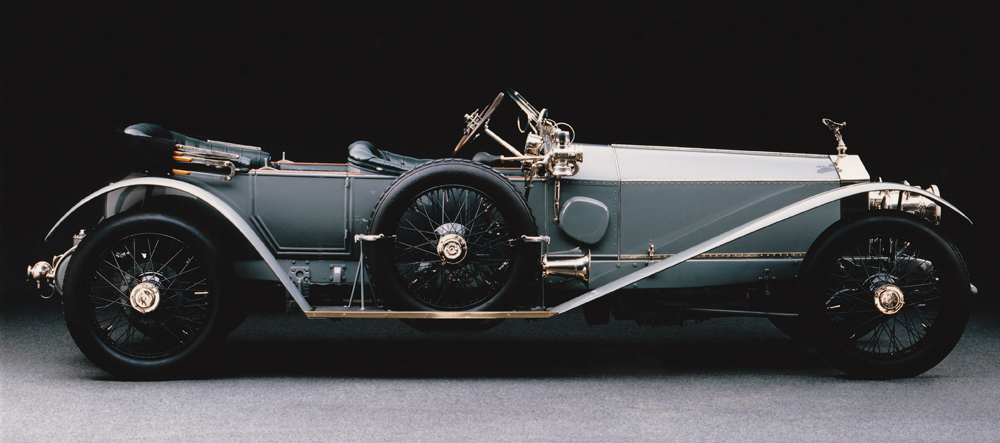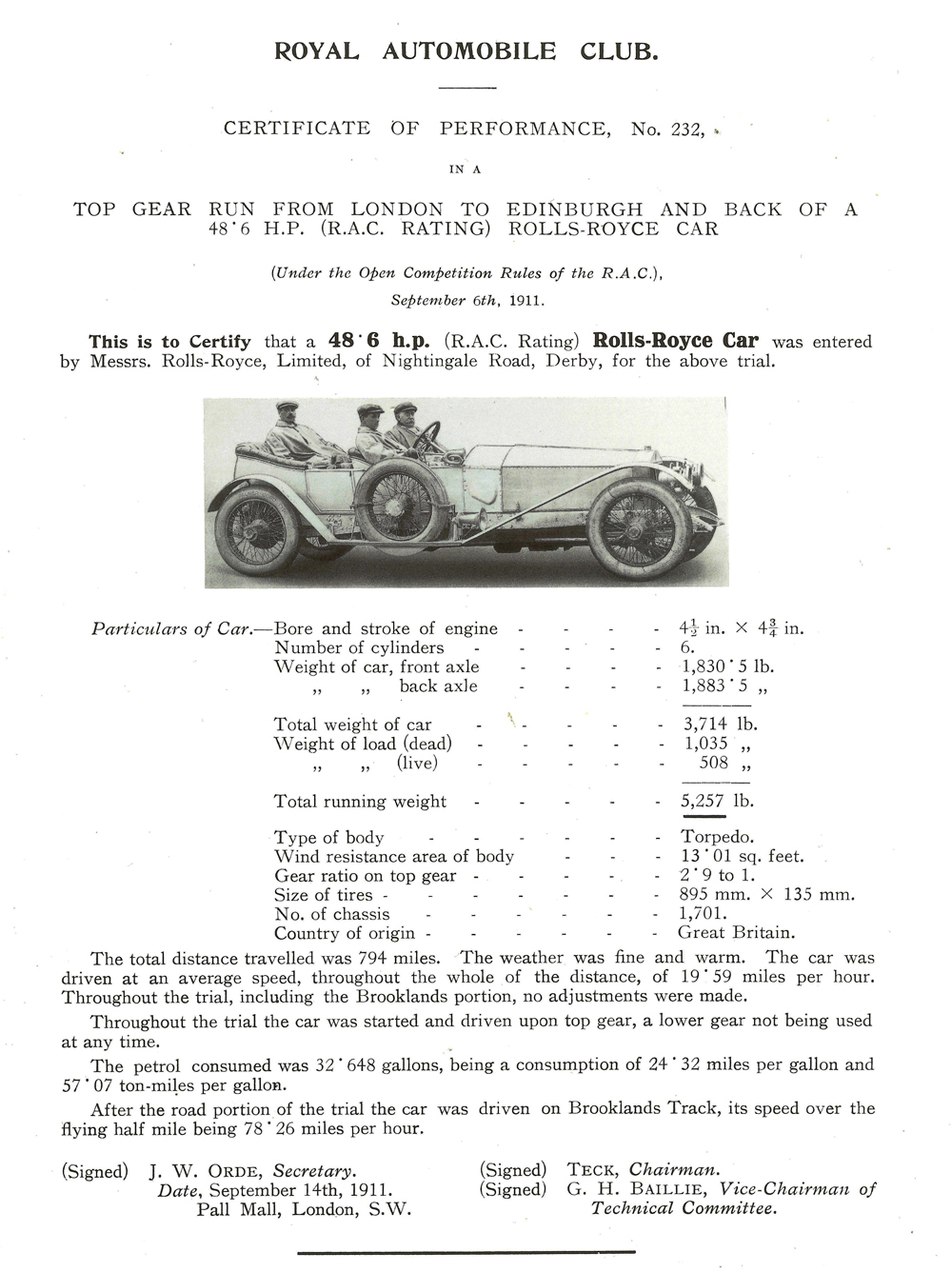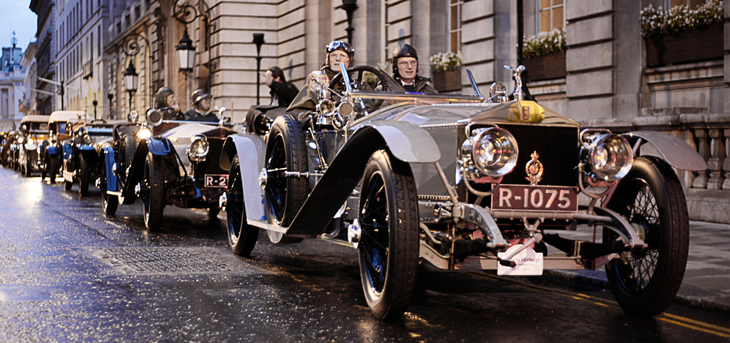
The first 100mph Rolls-Royce, a 1911 ‘Experimental Speed Car’ known as 1701
No other car at the time could match this Rolls-Royce feat, with 1701 driving from London to Edinburgh and back using top gear only and averaging fuel consumption of more than 24mpg. To prove that the original chassis had a normal back axle ratio and that the car had received no mechanical alteration, the car was then driven at Brooklands, achieving over 78mph. Later, when fitted with a ‘wind-cheating’ single-seat body, 1701 recorded a speed of 101mph over the flying half-mile at Brooklands driven by E.W. Hives, eventually destined to become Chairman of the Rolls-Royce company.



The first 100mph Rolls-Royce, a 1911 ‘Experimental Speed Car’ known as 1701, will lead a cavalcade of 17 historic Rolls-Royce Silver Ghosts from the Royal Automobile Club, Pall Mall, on Sunday 11 September. The historic cars, dating from 1911 to 1922, will be supported by a new Rolls-Royce Ghost, hand built at the Home of Rolls-Royce Motor Cars at Goodwood, West Sussex. The event, run by the 20-Ghost Club, will re-enact the 1911 London to Edinburgh Top Gear Trial, which cemented the Rolls-Royce reputation for superlative quality, refinement and reliability.
The 1911 RAC-observed London to Edinburgh Trial was a major test for Edwardian cars. The Trial allowed Rolls-Royce to demonstrate the performance, flexibility and economy of the Silver Ghost, particularly when compared to its arch rival, the Napier. At the same time it broadened the appeal of the car to a younger and sportier clientele, without deterring the traditional aristocratic customer that was at that time the mainstay of Rolls-Royce production. The RAC observers ensured that only top gear was used, including pulling away from standstill, quite an achievement 100 years ago before motorways and metalled roads.
No other car at the time could match this Rolls-Royce feat, with 1701 driving from London to Edinburgh and back using top gear only and averaging fuel consumption of more than 24mpg. To prove that the original chassis had a normal back axle ratio and that the car had received no mechanical alteration, the car was then driven at Brooklands, achieving over 78mph. Later, when fitted with a ‘wind-cheating’ single-seat body, 1701 recorded a speed of 101mph over the flying half-mile at Brooklands driven by E.W. Hives, eventually destined to become Chairman of the Rolls-Royce company.

You must be logged in to post a comment.